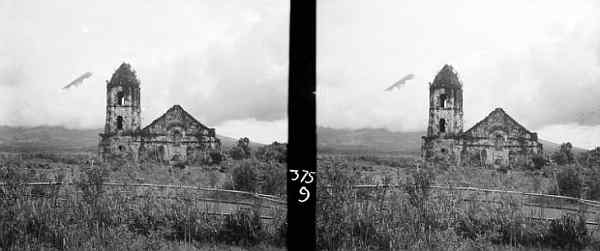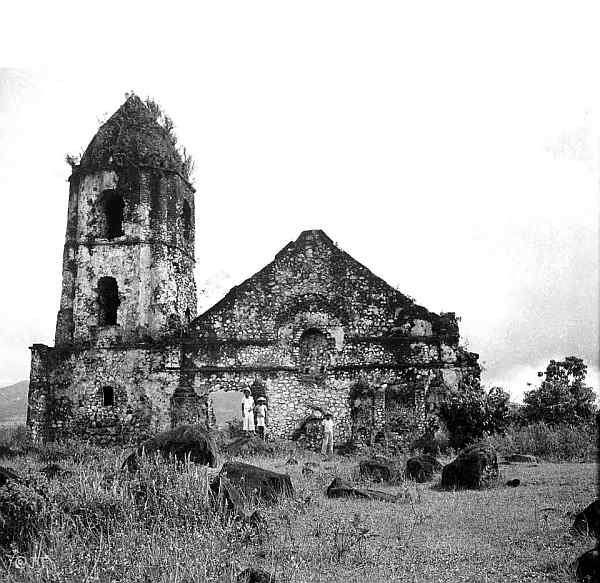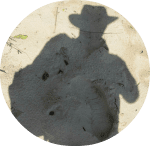Cagsawa Church | Destroyed by a Volcano
Destroyed but Not Buried
Cagsawa Church – The Church that Mayon Destroyed
A Short History of Cagsawa Church
The Church of Cagsawa was originally built in 1587 in the small town of Cagsawa in Bicol, Philippines. It was burned down by Dutch pirates in 1636.
In 1724, the church was rebuilt by Franciscan friars under the direction of Father Francisco Blanco.
On February 1, 1814, the strongest eruption recorded to date of the Mayon volcano buried the town of Cagsawa and its surrounding areas under several hundred million cubic meters of rocks and lava, killing an estimated 2,000 people. Hundreds of inhabitants of the town of Cagsawa are said to have sought refuge in the church, but were killed by pyroclastic flows and lava.
Only the belfry and some parts of the convent survive today, though parts of the crumbling facade were still standing long after the 1814 eruption as attested by photographs taken by Pendleton in 1934. It is believed that the facade of the structure collapsed due to several earthquakes that hit the area in the 1950s.
Survivors of the 1814 eruption resettled in nearby Daraga, which was then a mere barrio of the destroyed town of Cagsawa.
The original Cagsawa church should not be confused with today’s intact church of Nuestra Señora de la Porteria (locally known as the Daraga Church), built in 1773 and located on a hill in the municipality of Daraga.

Cagsawa Ruins
The ruins of Cagsawa Church now stand as the site of the Cagsawa Ruins Park, one of the most popular tourist destinations in Albay. It is also the site of the Cagsawa Branch of the National Museum of the Philippines, also known as the Cagsawa National Museum. The museum was established on land that was donated by the municipality of Daraga to the National Museum on January 26, 1981.
It was formally inaugurated on October 30, 1992 and is the third largest regional branch of the National Museum. It houses a collection of photographs of the volcanic eruptions of Mount Mayon as well as various geological and archeological exhibits.

Cagsawa Church – Buried or Not Buried Under Lava?
Cagsawa Church was not buried under Lava in 1814 as the following images attest.
.
In 1934, or 120 years after the 1814 eruption, American photographer Robert Larrimore Pendleton (1890-1957) took photographs of the church ruins showing the façade and the walls still intact, proving that the church was not buried..
The belltower stood as tall as it stands today. The ruins of the Ayuntamiento and the Casa Real still stood amid the wild grasses. The surrounding church land and that of the town have since then been farmed and cleared by the residents in the nearby Barangays of Busay and Culliat.
.
The Pendleton pictures are now in the John Tewell collection. These are incontrovertible proof that the church was not buried under lava in 1814.
Read this article from Esquiremag.ph




Cagsawa Bell Tower 1934 Photographer: Robert Larimore Pendleton, 1890-1957
This image is from the original negative that is in the American Geographical Society Library of the University of Wisconsin-Milwaukee, USA collections.
Courtesy of John Tewell©

SILVERBACKPACKER
Essential Travel Guides
Cagsawa Church
Daraga
Bicol
Philippines
Related Posts you may enjoy reading
Mayon Volcano in 21 Instagrams
Tabak Festival in Tabaco City, Albay
A Love Affair with Mayon
How to travel to Cagsawa
By Air
Philippine Airlines and Cebu Pacific have regular flights from Manila and Cebu to Legazpi City. From the airport there are jeepneys or tricycles to Cagsawa.
By Bus
Several bus lines connect Metro Manila to Daraga and Legazpi City. Philtranco, Superlines, DLTB, Cagsawa, Amihan, Isarog Line, St. Jude Transit. The buses pass by the entrance to Cagsawa, so make sure you mention to the conductor you wish to alight there.
Travel time is approximately 9 to 10 hours.
By Jeepney
From Legazpi, ride a jeepney bound for Camalig, Guinobatan or Polangui. These jeepneys will all pass by Cagsawa Junction where you alight and may either walk for 15 minutes or hire a tricycle to the ruins.

PIN to Read Later

Did you like “Cagsawa Church | Destroyed by a Volcano” ? If so then please share this page with your friends.
Leave a comment below to let me know what you liked best.
Follow Silverbackpacker on Facebook, Instagram ,Twitter and Pinterest for more travel adventures and be notified about my latest posts and updates!
Thankyou for sharing 🙂
PIN to Read Later

Please Note – All blog post photos on Silverbackbacker.com are of a lower quality to enable faster loading and save you data. If you would like to buy or license higher quality copies of any of the photographs you can email us at silverbackpackertravels@gmail.com
All photographs and content on this website remain the property of Silverbackpacker.com. Images may not be downloaded, copied, reproduced or used in any way without prior written consent.
Print purchases entitle the purchaser to the ownership of the image but not to the copyrights of the image which still remain with Silverbackpacker.com even after purchase.
Follow Silverbackpacker for more of his Travels
Facebook @silverbackpacker | Instagram @silverbackpacker
Twitter @silverbackpaker | Pinterest @silverbackpaker
Audere Est Facere – Silverbackpacker.com – To Dare is To Do
Affiliate Disclaimer: Links on this website may be affiliate links that could result in us receiving compensation when you purchase a product or service from that link. You do not pay any extra fees for these items. This helps us to keep this website going. Thank you for your support.
Disclaimer | Privacy Policy | All Rights Reserved
